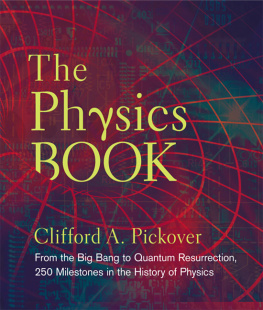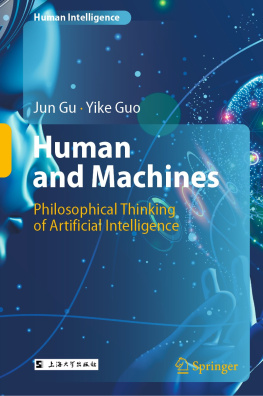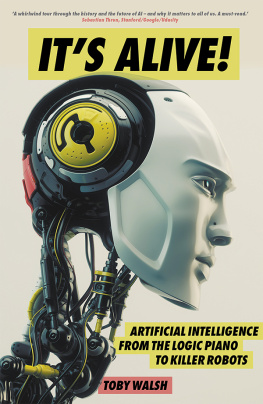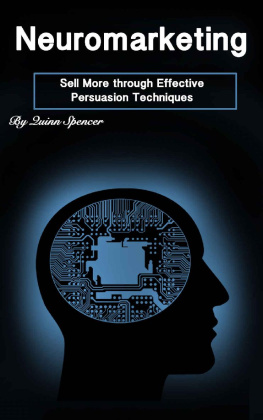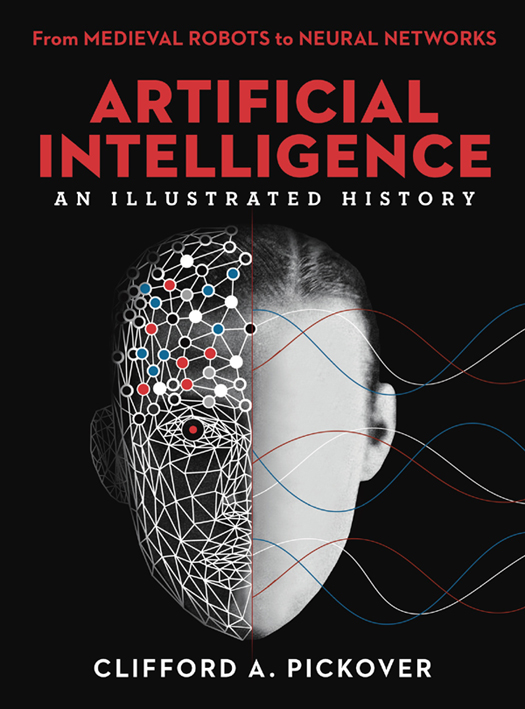BOOKS BY CLIFFORD A. PICKOVER
STERLING is a registered trademark and the distinctive Sterling logo is a trademark of Sterling Publishing Co., Inc.
Text 2019 Clifford A. Pickover
Cover 2019 Sterling Publishing Co., Inc.
All rights reserved. No part of this publication may be reproduced, stored in a retrieval system, or transmitted in any form or by any means (including electronic, mechanical, photocopying, recording, or otherwise) without prior written permission from the publisher.
All trademarks are the property of their respective owners, are used for editorial purposes only, and the publisher makes no claim of ownership and shall acquire no right, title or interest in such trademarks by virtue of this publication.
ISBN 978-1-4549-3360-1
For information about custom editions, special sales, and premium and corporate purchases, please contact Sterling Special Sales at 800-805-5489 or .
sterlingpublishing.com
Cover and endpaper design by Elizabeth Mihaltse Lindy
Front cover illustration by Matthieu Bourel (WFH)
For image credits, see
An attempt will be made to find how to make machines use language, form abstractions and concepts, solve the kinds of problems now reserved for humans, and improve themselves.... For the present purpose, the artificial intelligence problem is taken to be that of making a machine behave in ways that would be called intelligent if a human were so behaving.
John McCarthy, Marvin Minsky, Nathaniel Rochester, and Claude Shannon, Proposal for the Dartmouth Summer Research Project on Artificial Intelligence, 1955
Artificial Intelligence can drive cars, trade stocks and shares, learn to carry out complex skills simply by watching YouTube videos, translate across dozens of different languages, recognize human faces with more accuracy than we can, and create original hypotheses to help discover new drugs for curing disease. Thats just the beginning.
Luke Dormehl, Thinking Machines, 2017
Not until a machine can write a sonnet or compose a concerto because of thoughts and emotions felt, and not by the chance fall of symbols, could we agree that machine equals brainthat is, not only write it but know that it had written it.
Professor Geoffrey Jefferson, The Mind of Mechanical Man, 1949
Whether we are based on carbon or on silicon makes no fundamental difference; we should each be treated with appropriate respect.
Arthur C. Clarke, 2010: Odyssey Two, 1984
Emerging as it does from many fieldsphilosophy, mathematics, psychology and even neurologyAI raises basic questions about human intelligence, memory, the mind/body problem, the origins of language, symbolic reasoning, information processing, and so forth. AI researchers arelike alchemists of old who sought to create gold from base metalseeking to create thinking machines from infinitesimal small bits of silicon oxyde.
Daniel Crevier, AI: The Tumultuous History of the Search for Artificial Intelligence, 1993
CONTENTS
INTRODUCTION
The period of time occupied by organic intelligence is just a thin sliver between early life and the long era of the machines.
Martin Rees, The Conversation, April 2017 interview
AI and Beyond
A lot of cutting edge AI has filtered into general applications, often without being called AI, because once something becomes useful enough and common enough, its not labeled AI anymore.
Nick Bostrom, AI Set to Exceed Human Brain Power, CNN.com, 2006
Throughout history, the mysteries of the mind, the nature of thought, and the possibility of artificial beings have captivated artists, scientists, philosophers, and even theologians. Symbols and stories involving automatamoving mechanical devices made in imitation of living beingspermeate myth, art, music, and literature. Our fascination with artificial intelligence (AI)apparently intelligent behavior by machinesis also reflected in the spooky or transcendent themes of blockbuster films or video games involving emotional robots and advanced intelligences that we can barely comprehend.
In this book, well embark on a vast chronological journey from ancient games to advanced modern computing approaches involving artificial neural networks that learn and improve their performance, often with little or no task-specific programming and rules. Along the way, well encounter odd and perplexing marvels like the mysterious copper knights of Arthurian legend. Well also encounter French inventor Jacques de Vaucansons Canard Digrateur, a hyper-realistic duck automaton that inspired American author Thomas Pynchons historical novel





